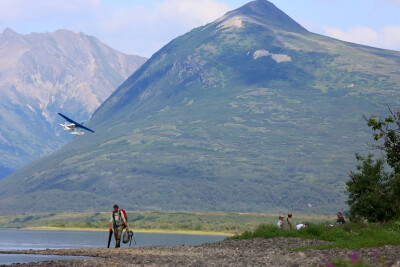It's a thrill for me as a fisherman to see a wild Alaskan silver salmon jump out of the water with my fly in his mouth. And it's an even greater thrill for me as a father to see my eldest son guide his old man and his little brother into a honey hole full of salmon on a remote Alaskan river.
I experienced both of those thrills this summer.
For three generations my family has come to Alaska to chase wild salmon. The Chinook, the Sockeye, the Coho, the Chum and the Humpback are graceful, powerful beauties with an unerring GPS for home. They're also tasty -- and among the healthiest sources of protein you can find. Wild salmon (the ultimate free-range meat) is high in healthful Omega 3 fatty acids, and has been found to prevent heart disease and diabetes in Native Alaskans -- even those who are obese. No wonder First Alaskans have been happily harvesting salmon for at least 40 centuries.
Of course, humans aren't the only species who know the joy of salmon. I have had the humble honor of sharing an Alaskan stream with a bevy of Brown Bears. Without my expensive waders or flyrod, lacking even polarized sunglasses, they out-fish me every time. I have seen eagles -- mammoth golden eagles and majestic bald eagles, dive-bomb rivers to pick off smaller salmon, and choruses of cacophonous sea gulls scavenge salmon carcasses on a riverbank. And I caught the biggest rainbow trout of my life in Alaska, where the species thrives on salmon eggs.
Salmon is the focal point of so much of the economy in Alaska and the Pacific Northwest. Salmon contribute $1.5 billion annually and 14,000 jobs to the region's economy. For good reason, the Chinook Salmon is the state fish of Alaska.
And yet this magnificent, abundant, nutritious, valuable resource is threatened. A partnership between two companies -- London-based Anglo American, which has a spotty environmental record and Vancouver-based Northern Dynasty -- wants to build one of the world's largest mines to extract copper, gold and molybdenum at the headwaters of two of the most significant rivers in Bristol Bay.
Read the full story at KTXS-TV>>






